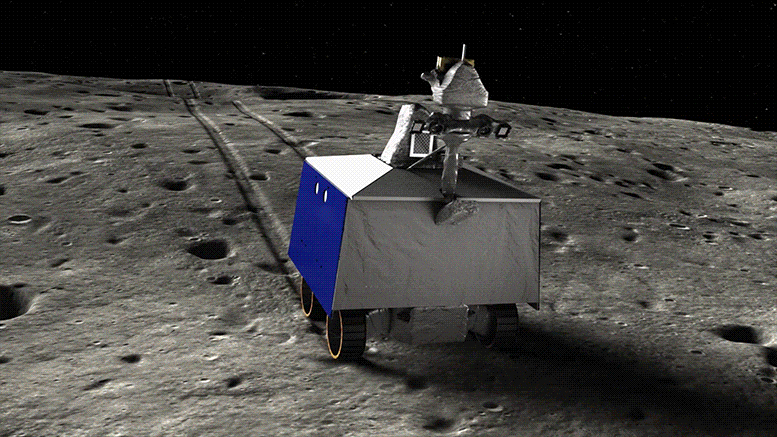

This week at NASA includes news on Artemis I mega Moon rocket, SpaceX Crew-2 astronauts, Earth Surface Mineral Dust Source Investigation or EMIT, Europa Clipper spacecraft, and VIPER Moon rover.
Our Artemis I mega Moon rocket is rolled to the launch pad …
The astronauts of our Crew-2 mission come to Washington ….
And investigating the impact of dust on our climate … a few of the stories to tell you about – This Week at NASA!
Artemis I Moon Rocket Rolled to Launch Pad Ahead of Tanking Test
On June 6, teams at our Kennedy Space Center rolled our Space Launch System rocket, Orion spacecraft, and mobile launcher from the Vehicle Assembly Building to launch pad 39B to prepare for the next wet dress rehearsal test attempt ahead of the uncrewed Artemis I flight test. The wet dress rehearsal test is currently targeted for no earlier than June 19.

The crew for the second long-duration SpaceX Crew Dragon mission to the International Space Station, NASA’s SpaceX Crew-2, are pictured during a training session at the SpaceX training facility in Hawthorne, California. From left are, Mission Specialist Thomas Pesquet of the (ESA (European Space Agency); Pilot Megan McArthur of NASA; Commander Shane Kimbrough of NASA; and Mission Specialist Akihiko Hoshide of the Japan Aerospace Exploration Agency. Credit: SpaceX
Crew-2 Astronauts Make Post-Flight Visit to D.C. Area
Our SpaceX Crew-2 astronauts – NASA’s Shane Kimbrough and Megan McArthur, Akihiko Hoshide of the Japan Aerospace Exploration Agency, and the European Space Agency’s Thomas Pesquet – visited the Washington, D.C. area during the week of June 6 to share experiences from their recent flight to the International Space Station. During a stop at our Mary W. Jackson NASA Headquarters building, they met with NASA leadership and discussed their mission with employees. They also attended an event hosted by the Ambassador of France to the United States during which the French space agency, CNES, became the 20th country to sign the Artemis Accords. The Crew-2 astronauts and their Crew Dragon Endeavour spacecraft spent 199 days in orbit – a record for the longest spaceflight by a U.S. crewed spacecraft.

EMIT will observe Earth from outside the International Space Station. Once it begins operation, EMIT data will be delivered to the NASA Land Processes Distributed Active Archive Center (DAAC) for use by other researchers and the public. Credit: NASA/JPL-Caltech
Space Station Climate Study on Next SpaceX Cargo Mission
The Earth Surface Mineral Dust Source Investigation or EMIT is one of the primary payloads scheduled for delivery to the International Space Station on the SpaceX CRS-25 cargo mission. The investigation will use NASA-invented imaging technology to identify the composition of mineral dust from Earth’s arid regions and analyze dust carried through the atmosphere from deserts to see what effects it has on the Earth system and to human populations. The CRS-25 cargo mission is currently targeted to launch no earlier than June 28.

NASA’s Europa Clipper spacecraft is visible in a main clean room at JPL, as engineers and technicians inspect it just after delivery in early June 2022. Credit: NASA/JPL-Caltech/Johns Hopkins APL/Ed Whitman
Europa Clipper Mission Completes Main Body of the Spacecraft
The main body of our Europa Clipper spacecraft was delivered recently to our Jet Propulsion Laboratory in Southern California. Engineers and technicians there will finish assembling the spacecraft by hand, then test it to make sure it can withstand the journey to Jupiter’s icy moon Europa. Targeted for launch in October 2024, the mission will make nearly 50 flybys of the Jovian moon, which is believed to have an underground ocean that contains twice as much water as all oceans on Earth combined. The ocean on Europa may also currently have conditions suitable for supporting life.

Life-size display model of NASA’s VIPER Moon rover for visitors at the Chabot Space and Science Center. Credit: NASA
Ames Debuts Life-Size VIPER Moon Rover Model for Visitors
Our Ames Research Center recently unveiled a life-size display model of the agency’s VIPER Moon rover for visitors at the Chabot Space and Science Center. VIPER, which is managed by Ames and is part of our Artemis program, will be delivered to the Moon’s South Pole in late 2023 to map and explore the region for water and other resources ahead of future human missions to the lunar surface.
That’s what’s up this week @NASA …